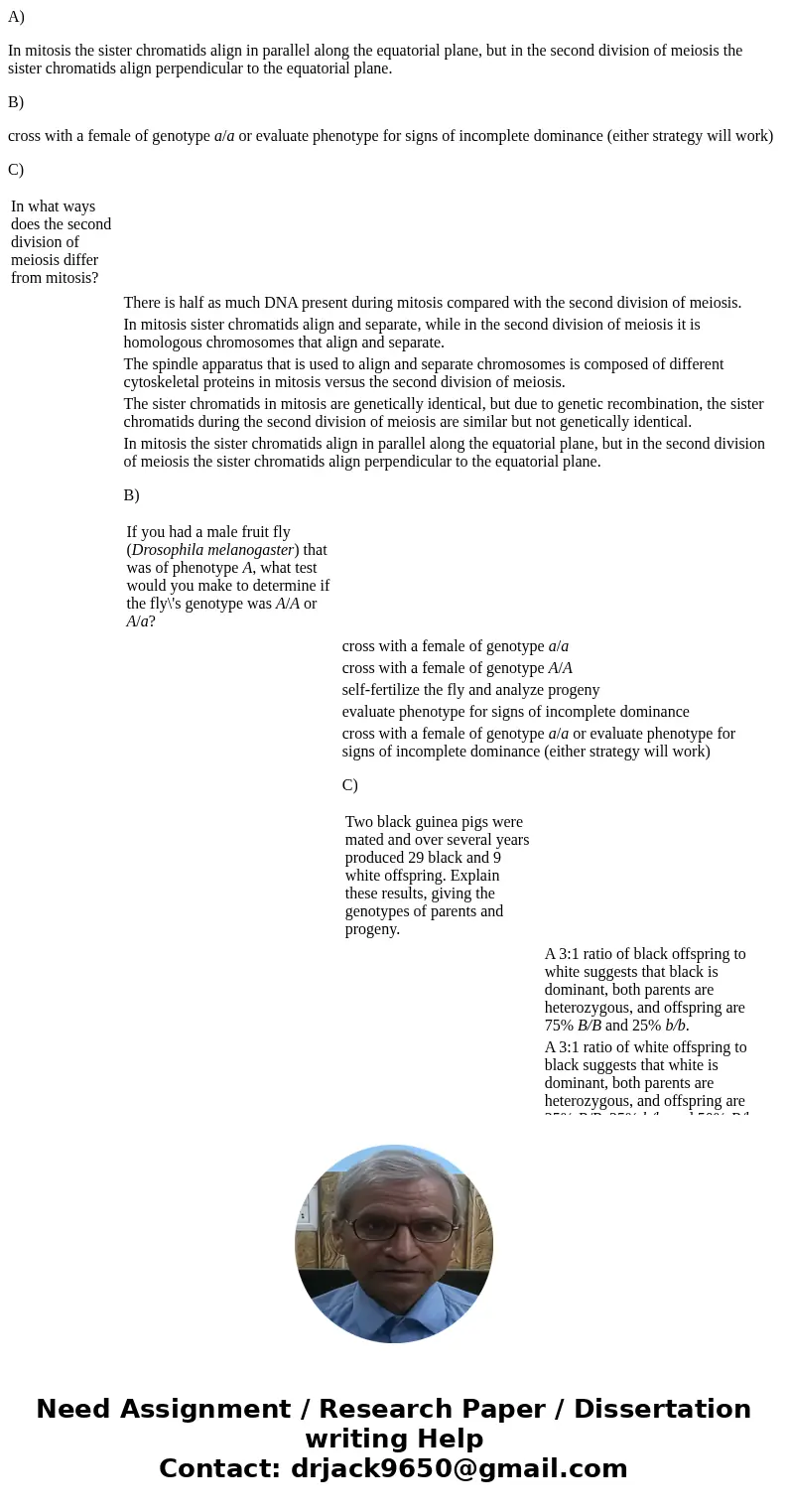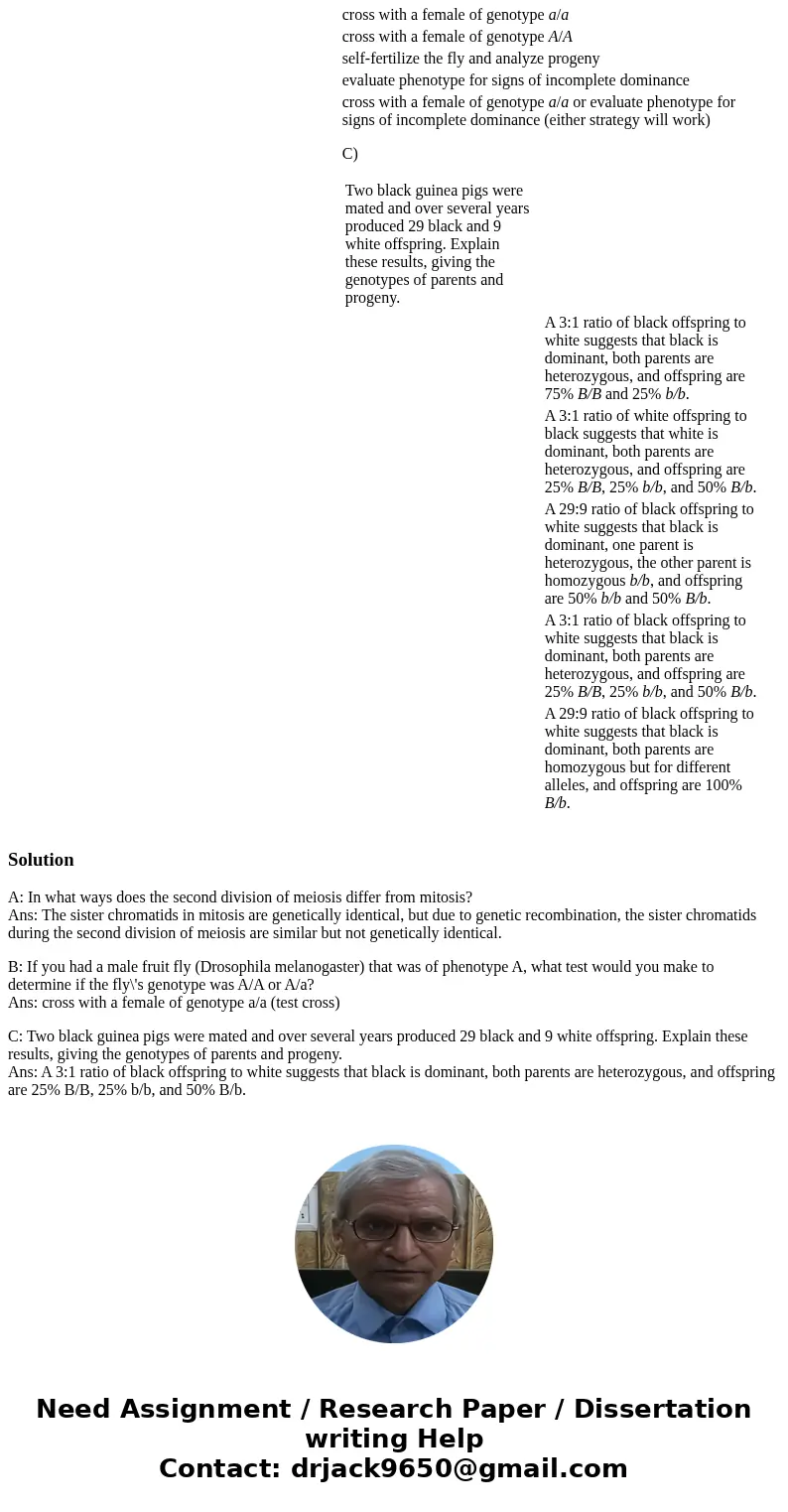A)
In mitosis the sister chromatids align in parallel along the equatorial plane, but in the second division of meiosis the sister chromatids align perpendicular to the equatorial plane.
B)
cross with a female of genotype a/a or evaluate phenotype for signs of incomplete dominance (either strategy will work)
C)
| In what ways does the second division of meiosis differ from mitosis? |
| | There is half as much DNA present during mitosis compared with the second division of meiosis. | | In mitosis sister chromatids align and separate, while in the second division of meiosis it is homologous chromosomes that align and separate. | | The spindle apparatus that is used to align and separate chromosomes is composed of different cytoskeletal proteins in mitosis versus the second division of meiosis. | | The sister chromatids in mitosis are genetically identical, but due to genetic recombination, the sister chromatids during the second division of meiosis are similar but not genetically identical. | | In mitosis the sister chromatids align in parallel along the equatorial plane, but in the second division of meiosis the sister chromatids align perpendicular to the equatorial plane. B) | If you had a male fruit fly (Drosophila melanogaster) that was of phenotype A, what test would you make to determine if the fly\'s genotype was A/A or A/a? | | | cross with a female of genotype a/a | | cross with a female of genotype A/A | | self-fertilize the fly and analyze progeny | | evaluate phenotype for signs of incomplete dominance | | cross with a female of genotype a/a or evaluate phenotype for signs of incomplete dominance (either strategy will work) C) | Two black guinea pigs were mated and over several years produced 29 black and 9 white offspring. Explain these results, giving the genotypes of parents and progeny. | | | A 3:1 ratio of black offspring to white suggests that black is dominant, both parents are heterozygous, and offspring are 75% B/B and 25% b/b. | | A 3:1 ratio of white offspring to black suggests that white is dominant, both parents are heterozygous, and offspring are 25% B/B, 25% b/b, and 50% B/b. | | A 29:9 ratio of black offspring to white suggests that black is dominant, one parent is heterozygous, the other parent is homozygous b/b, and offspring are 50% b/b and 50% B/b. | | A 3:1 ratio of black offspring to white suggests that black is dominant, both parents are heterozygous, and offspring are 25% B/B, 25% b/b, and 50% B/b. | | A 29:9 ratio of black offspring to white suggests that black is dominant, both parents are homozygous but for different alleles, and offspring are 100% B/b. | | | | | |
A: In what ways does the second division of meiosis differ from mitosis?
Ans: The sister chromatids in mitosis are genetically identical, but due to genetic recombination, the sister chromatids during the second division of meiosis are similar but not genetically identical.
B: If you had a male fruit fly (Drosophila melanogaster) that was of phenotype A, what test would you make to determine if the fly\'s genotype was A/A or A/a?
Ans: cross with a female of genotype a/a (test cross)
C: Two black guinea pigs were mated and over several years produced 29 black and 9 white offspring. Explain these results, giving the genotypes of parents and progeny.
Ans: A 3:1 ratio of black offspring to white suggests that black is dominant, both parents are heterozygous, and offspring are 25% B/B, 25% b/b, and 50% B/b.


 Homework Sourse
Homework Sourse